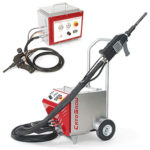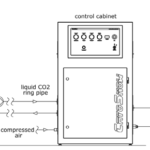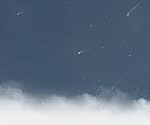Tekniken
State of the art
Rengöring med olika typer av koldioxid har redan funnits i flera decennier. Kända processer är blästring med cylindriska eller förvrängda torrispellets eller torrispartiklar rivna från torrisblock. På grund av de höga investerings- och driftskostnaderna samt förekomsten av mekanisk påverkan på komponentytor har denna process inte kunnat etablera sig som en industriell rengöringsprocess. Automatisering har hittills inte varit möjlig.
Process
CO2-snöblästring är en innovativ process för rengöring och förbehandling av ytor. Tillförselmediet är flytande CO2 och tryckluft. Sprängmedlet, de så kallade CO2-snöpartiklarna från torris, produceras inte förrän den flytande CO2 når snöblästringsmaskinen. Installationen av utrustningen är mycket enkel. Den flytande CO2en kan antingen tillföras via lågtryckstankar, minitankar, enstaka cylindrar eller buntar med var sitt dopprör. Tillförseln av tryckluft sker antingen via husnätet eller via en skruvkompressor. En strömförsörjning är inte nödvändig. Rengöring och ytbehandling är torr, restfri och miljövänlig. Dessutom erbjuder tekniken andra intressanta fördelar.
Applikation
CO2-snöblästring kallas ofta torrisblästring eller CO2-partikelblästring. Det flexibla styrkonceptet gör att processen antingen kan implementeras manuellt eller automatiseras. Själva styrenheten är lämplig för mobil användning och för installation på en fast plats. För den manuella driften styr en utbildad anställd CO2-snöblästringspistolen över komponentytan som ska bearbetas. Med den automatiserade versionen utförs rörelsen av en robot med robotens kontrollenhet som reglerar processen. En adekvat frånluftsfläkt, ett ljudisolerat skåp och personligt skydd för operatören bör ingå vid planering av utrustningsinstallationer.


Läs mer »Installation
Manuell eller automatiserad installation.
